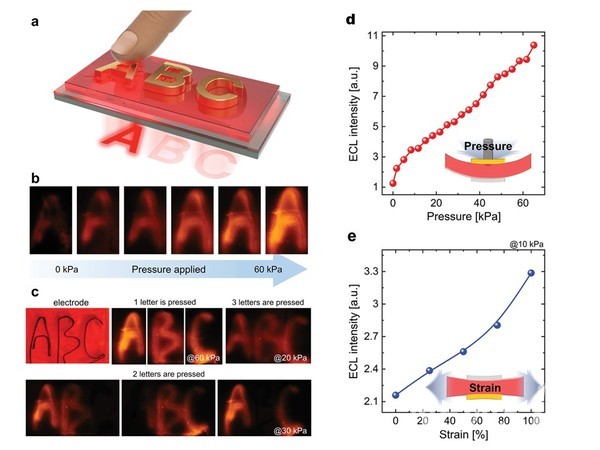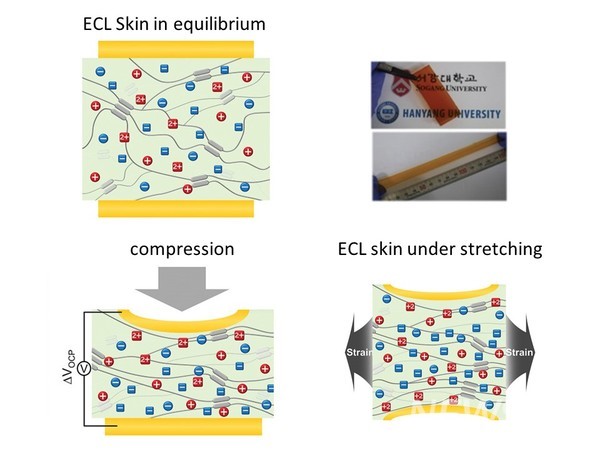Developed electronic skin that changes brightness according to the pressure, using ionic light-emitting material
Professor Kim Do-hwan from Hanyang University Department of Chemical Engineering and his co-research team developed "Smart Electronic Skin" that changes brightness according to the pressing force. The electronic skin is a soft and elastic electronic device that detects temperature, humidity, and pressure, similar to human skin.
The research was co-conducted by Professor Kim and Professor Kang Moon-sung of Seokang University. The research was posted online on June 2nd in the international journal Advanced Materials. The title is "Visco-Poroelastic Electrochemiluminescence Skin with Piezo-Ionic Effect."
The existing electronic skin needs sensors to detect the pressure and a display device, making it difficult to operate with low electricity. Additionally, it had weaknesses as it only senses whether there is pressure, not being sensitive enough to detect changing pressure and provide visual feedback accordingly.
The research team gained insight from sea plankton which alters its brightness when stimulated by seawater flow and created electronic skin using an elastic polymer material and a light-emitting material integrated. They used the principle where the brightness of light changes according to the pressing force on the pressed area, based on the change of ion dispersion within the material.

The research team created a thin film-shaped light-emitting material that can detect the location and strength of stimulation and display them with light simultaneously, without separate pressure detecting devices, light-emitting devices, and connecting circuits. The new electronic skin can produce lights of various brightness according to the pressure by hands (0~60kPa).
Moreover, the developed electronic skin showed an interesting result where its brightness increased in proportion with the level of stimulation. This characteristic is different from existing electronic skins and has an advantage when distinguishing the strength of stimulation.

Professor Kim said that this research result "holds great meaning in providing a new method to control ion dispersion within light-emitting skin according to pressing force." Professor Kim also stated he expects the researcher to apply the technology to the visual-tactile interface between users and objects in the era of the Internet of Things (IoT), based on user-friendly immersive technology, such as flexible touchscreens and buttonless displays.
Regarding the new skin's practical use, he added, "we need to use bio-friendly materials to apply electronic skins directly to the human body. Further research is needed on the impacts of these skins on the human body."
The research was conducted with the support of the Ministry of Science and ICT and the National Research Foundation.
Click to see the paper

